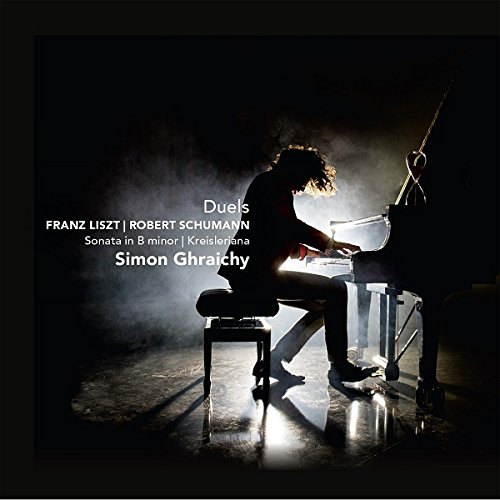LISZT Piano Sonata SCHUMANN Kreisleriana
View record and artist detailsRecord and Artist Details
Composer or Director: Franz Liszt, Robert Schumann
Genre:
Instrumental
Label: Challenge Classics
Magazine Review Date: 04/2016
Media Format: CD or Download
Media Runtime: 74
Mastering:
DDD
Catalogue Number: CC72698

Tracks:
| Composition | Artist Credit |
|---|---|
| Sonata for Piano |
Franz Liszt, Composer
Franz Liszt, Composer Simon Ghraichy, Piano |
| Kreisleriana |
Robert Schumann, Composer
Robert Schumann, Composer Simon Ghraichy, Piano |
| Symphony No. 7 (Beethoven), Movement: Allegretto |
Franz Liszt, Composer
Franz Liszt, Composer Simon Ghraichy, Piano |
Author: Patrick Rucker
In the Liszt Sonata, Ghraichy seems intent on an unconventional, even contrarian interpretation. The very legitimate device of ‘breaking the hands’ – playing the hands not precisely simultaneously for expressive effect – is lavishly applied. At the very beginning, however, ‘breaking’ the descending octaves only serves to ambiguate their ominous portent. Elsewhere, this profligate avoidance of solid chords weakens the underlying rhythmical scaffolding. Ghraichy’s tendency to release surges of energy, à la Rachmaninov, at climactic moments causes him to obscure passages in splatters of notes, even as he plays havoc with the pulse. Unfortunately the overall effect is of grand rhetorical gestures reduced to hollow grandiloquence. Tempestuousness lapses into hysteria.
If a limited dynamic palette and narrow spectrum of articulation strategies impede the Liszt, they loom large in Kreisleriana. Without doubt, Ghraichy portrays the characteristic dreamy, languid moods of Schumann quite beautifully. However, he tends to play repeated lines, passages, even pages (or their close parallels) as though they were photocopies of the first presentation. In an extended work such as Kreisleriana, so filled with meaningful retrospection, these mindlessly unvaried repeats grow tiresome.
From the outset, the Allegretto from the Beethoven-Liszt Seventh Symphony is off on the wrong foot. Oddly, Ghraichy chooses to emphasise the second beat of each measure. Perhaps the intent was to differentiate the tenuto first-beat crotchet from the quaver staccatos of the second. But with its fundamental dactyl pulse distorted, the movement’s emblematic solemn dignity is irretrievable.
Despite careful scrutiny of the booklet-notes by Alla Hoffmann and Nicolas Dufetel, I am unable to say why this CD should be entitled ‘Duels’.
Discover the world's largest classical music catalogue with Presto Music.

Gramophone Digital Club
- Digital Edition
- Digital Archive
- Reviews Database
- Full website access
From £8.75 / month
Subscribe
Gramophone Full Club
- Print Edition
- Digital Edition
- Digital Archive
- Reviews Database
- Full website access
From £11.00 / month
Subscribe
If you are a library, university or other organisation that would be interested in an institutional subscription to Gramophone please click here for further information.




